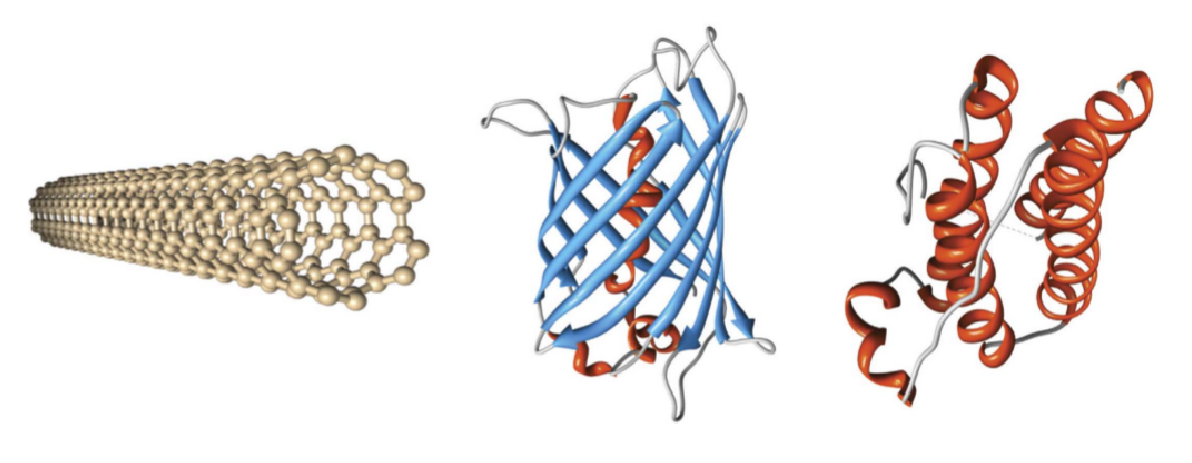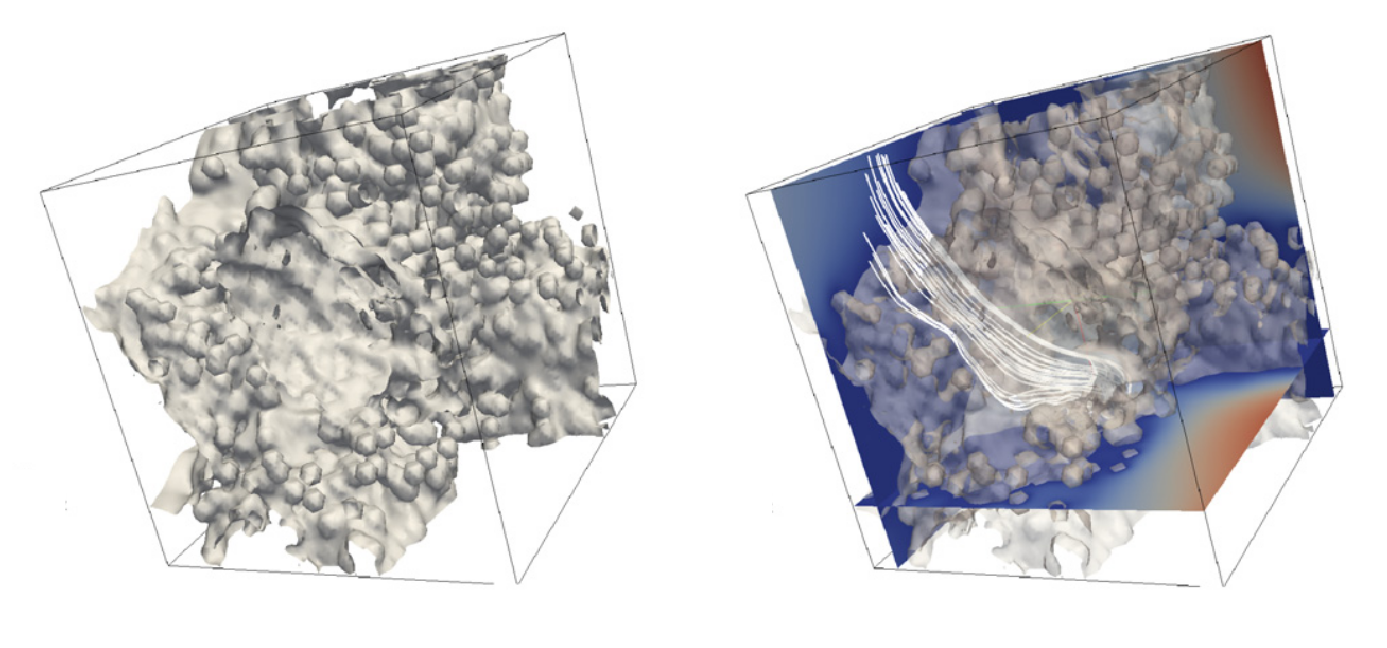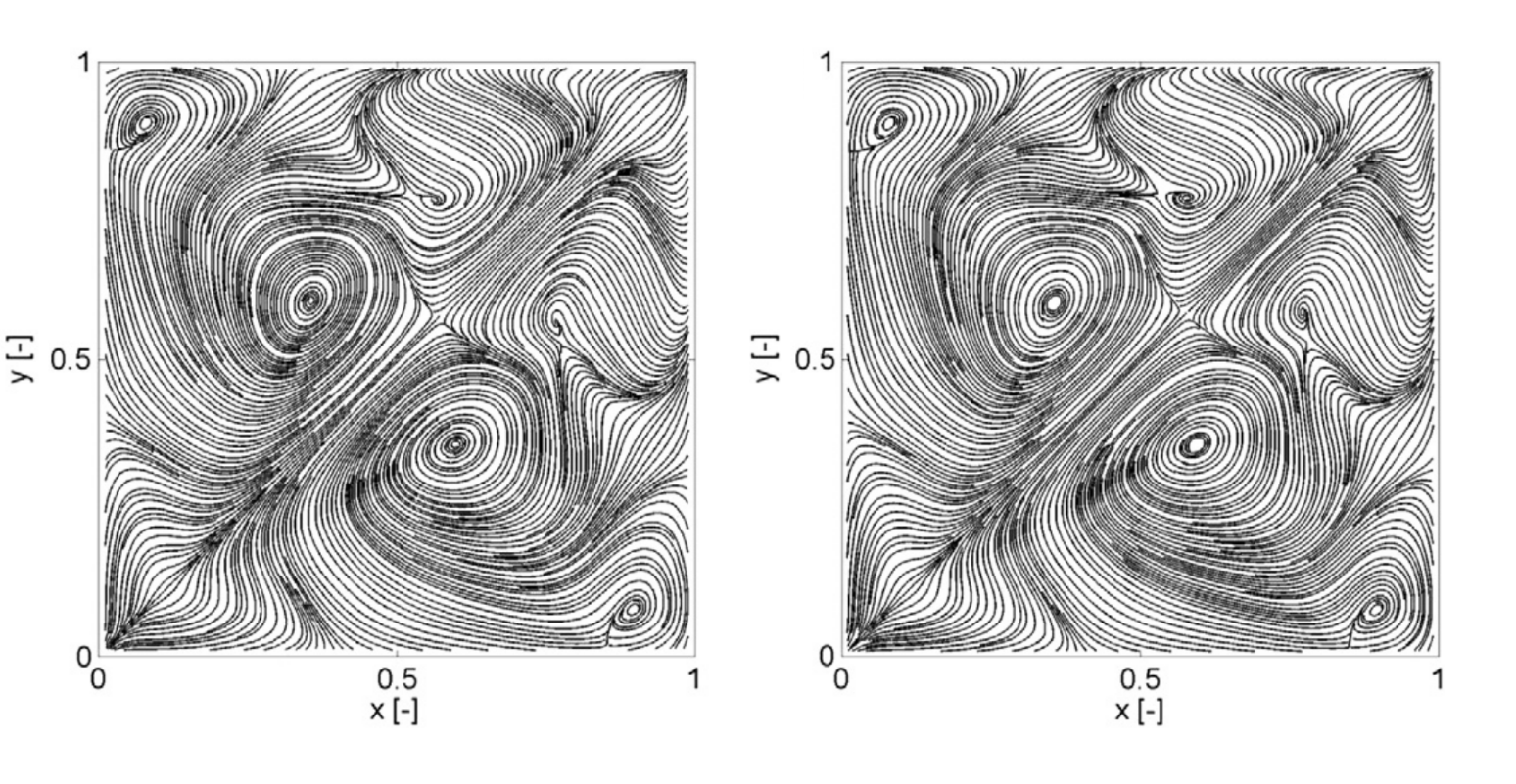Multi-Scale Modeling Laboratory
- a SMaLL step forward -
Multi-Scale Modeling Laboratory
- a SMaLL step forward -
As an example application of molecular dynamics simulations, let us consider one of our most recent publications on water. In this work, we focused on the analysis of the transport of water, which in nano-confined geometries is different from the bulk phase. This has tremendous implications in nano- and bio-technological applications. Here molecular dynamics was used to compute the self-diffusion coefficient of water within nanopores, around nanoparticles, carbon nanotubes and proteins. For almost 60 different cases, the diffusion coefficient was found to scale linearly with a parameter which represents the ratio between the confined and total water volumes. As an example, such relationship has been shown to accurately predict the relaxometric response of contrast agents for magnetic resonance imaging. This relationship can help in interpreting the transport of water molecules under nanoconfined conditions and tailoring nanostructures with precise modulation of water mobility.

As an example of continuum-scale flow simulations, let us consider one of our recent publications on membrane degradation in high temperature fuel cells based on proton exchange membranes (HT-PEM). In this work, we focused on direct numerical simulations of the fluid flow through two fundamental regions of the HT-PEM electrodes, namely a woven gas diffusion layer (GDL) and a catalyst layer (CL). We proposed a deterministic model for the reconstruction of the GDL and a stochastic model for the CL based on clusterization of carbon particles. The simulations of the pore-scale fluid flow, performed using a lattice Boltzmann method, showed that both models allow to accurately recover the experimental values of the permeability without any arbitrary tuning of the parameters.

Detailed simulations of the fluid flow in complex geometries is remarkably important for
a wide range of engineering applications. However, it also represents a challenging problem
due, to the difficulties in the discretization of the flow domain. Unstructured meshes greatly
simplify the treatment of boundaries, yet, at the cost of introducing extra complexity and/or
numerical errors. An alternative approach is to make use of Cartesian grids with a proper
treatment of boundary cells. In this framework, the lattice Boltzmann method (LBM), a
pseudo-kinetic method derived from kinetic theory of gases, has attracted great interest
in recent years. In our lab, we work on the development of this and other pseudo-kinetic methods.
As an example, we have demonstrated that, as far as the solution of the incompressible
Navier-Stokes equations is concerned, the lattice Bolztmann method can be reformulated in a
convenient way to avoid dealing with the unessential features which this method inherits from
kinetic theory. Hence, the Link-Wise Artificial Compressibility Method (LW-ACM) has been proposed.
